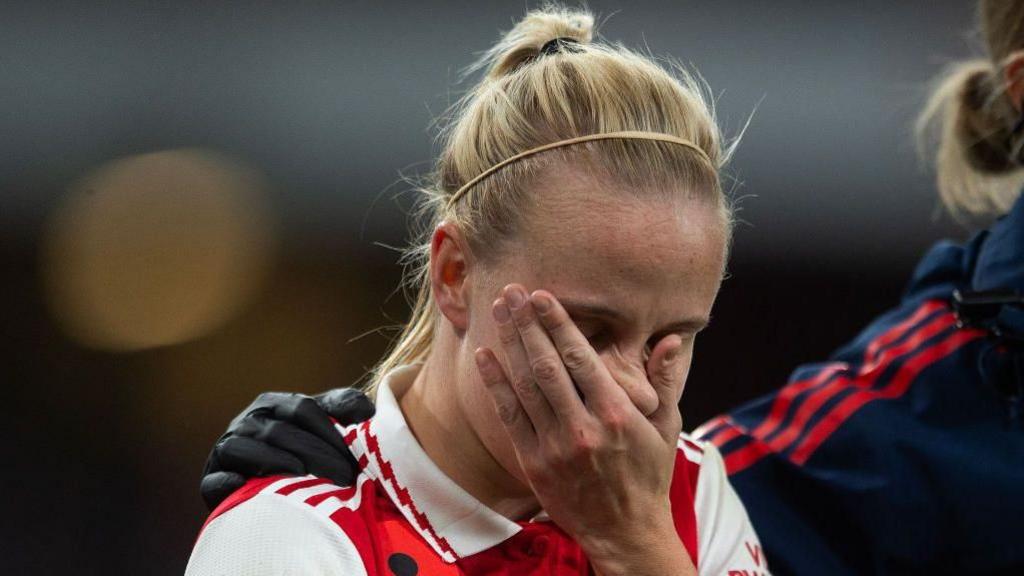England captain Leah Williamson (right) was sidelined for the 2023 World Cup after sustaining an ACL injury while playing for Arsenal.
Fifa has announced funding for a study investigating whether hormonal changes during the menstrual cycle may contribute to the increasing rate of anterior cruciate ligament (ACL) injuries in women’s football.
The year-long project, to be conducted at Kingston University London, will commence next month.
Current research indicates that female footballers are two to six times more likely to experience ACL injuries than their male peers.
High-profile players including Vivianne Miedema, Beth Mead, Leah Williamson and Sam Kerr have all suffered ACL injuries in recent years.
“We aim to understand if athletes face increased injury risk due to anatomical and physiological changes associated with their menstrual cycles,” explained Simon Augustus, senior lecturer in sport biomechanics at the university.
“While it’s established that hormone levels change throughout the cycle, the extent to which this might affect injury risk remains unclear.”
Participants from London clubs, including Fulham, as well as grassroots players, will be involved in the research, having their blood and physical performance monitored regularly.
The study will monitor hormone levels—specifically oestrogen and progesterone—across the menstrual cycle, building on evidence that links these hormones to increased ligament laxity and reduced neuromuscular response times.
Researchers will analyse injury scenarios such as rapid changes in direction and landing after headers, to explore any correlation with hormonal phases.
“While some injuries are unavoidable, our goal is to assist players who suffer ACL injuries outside of direct physical contact, since these might be more preventable through strength training or technical adjustments,” Augustus added.
“Many variables contribute to ACL injuries. We are adopting an individualised approach, assessing each athlete’s profile to develop risk reduction protocols.”
Should female footballers play on different pitches?
Why are ACL injuries so prevalent among female footballers?
MPs criticise ‘slow’ response to ACL injury concerns
In May 2024, research by University College London, the University of Bath, and St Mary’s University indicated that injury likelihood may fluctuate across different stages of the menstrual cycle.
The peer-reviewed study found that the 26 players observed were six times more likely to sustain a muscle injury in the days preceding their periods compared to during menstruation.
Separate to the Fifa-supported research, the Professional Footballers’ Association (PFA), Fifpro, Nike, and Leeds Beckett University have launched a three-year programme focused on ACL injury prevention.
This initiative will address external factors, such as quality of facilities, squad-to-staff ratios, access to training resources, travel, and fixture congestion.
Issues like inadequate football boots, equipment, and substandard pitches have also been identified as potential contributors.
Last month, Brighton chief executive Paul Barber told BBC Sport that the club is conducting its own research to ensure its new women’s team stadium meets appropriate standards.
Find out how to participate here
Follow the latest WSL updates on our dedicated platform

